Instagram is perhaps the best platform for promoting your brand – especially using influencers.
As of January 2018, 78 percent of social influencers used Instagram for brand collaborations worldwide, while the share of blogs remained 16 percent followed by YouTube (4 percent), Facebook (2 percent), and Pinterest (1 percent).
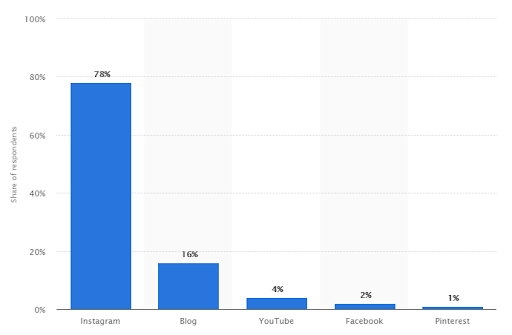
Instagram influencers can easily generate authentic word-of-mouth engagement that turns their followers into your loyal customers.
According to a study released by Quintly, Instagram boasts the highest interaction rate compared to all its counterparts.
As the most effective platform, it seems to be the right choice for your influencer marketing campaigns. Without the right influencers, however, you can’t produce the desired results even on Instagram.
Finding the best suited Instagram influencers for your niche can be challenging. Here are four essential tips that will help.
1. Keep Your Business Goals in Mind
Before you start looking up the influencer’s vital metrics such as engagement rate and number of followers, think about your business goals.
Step back and determine why and how you intend to use Instagram influencer marketing campaigns.
Why Do You Need Influencers?
What specific objectives do you have in mind for influencer marketing?
The three primary goals should be:
- Increasing brand awareness.
- Generating leads or sales.
- Increasing your Instagram followers.
Your choice of influencer will depend on these objectives.
For example, increasing your Instagram followers will require you to create competitions or quizzes using a specific hashtag. Roping in an influencer who can participate in the competition and encourage his/her followers to jump in too will be the right way to go.
On the other hand, sales and lead generation will need you to use affiliate marketing and discount codes. So, you will need to partner with influencers whose audience is likely to buy your product.
Do They Fit Your Brand’s Personality?
The influencer needs to align with your brand’s identity or at least the products you want to sell. If there is no brand alignment, your campaigns will generate low ROI.
Having a clear idea of your influencer campaign goals is necessary to find an influencer that closely reflects your brand.
For example, an influencer who is known for traveling on a budget will be the right choice to promote low-cost travel gear. Hiring a model who offers beauty tips will be a waste of time.
Sperry, a boat shoe brand, worked with more than 100 micro-influencers who were already posting high-quality images of Sperry’s products on social media. Most photos comprised the micro-influencers in high-altitude scenic locations.
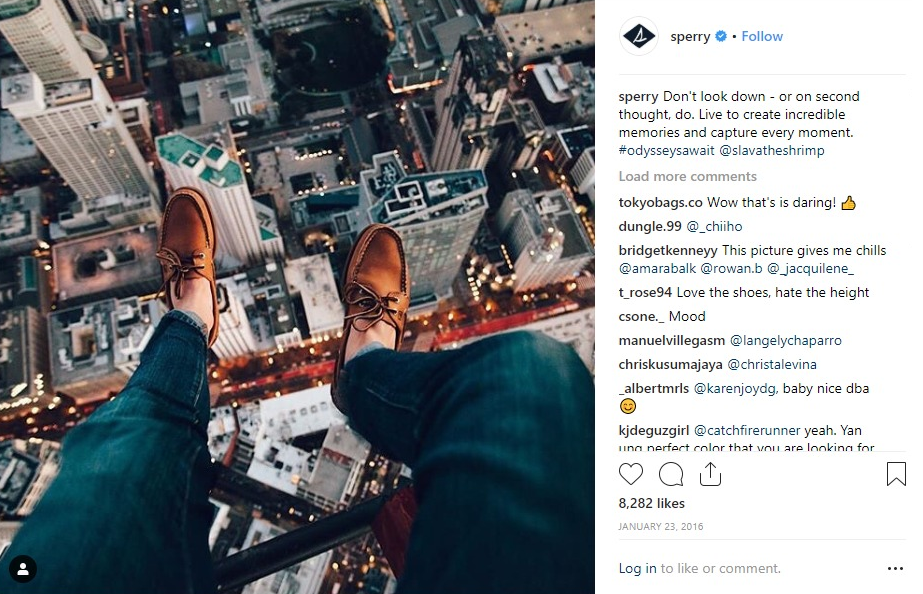
Until recently, Canon focused on using professional photographers to drive their latest innovations on Instagram.
Thinking outside the box, however, the brand has started embracing the new generation Instagrammers like filmmakers Elise Bauman to promote their products on Instagram.
Although these influencers have a lesser number of followers, they offer better engagement owing to their industry expertise.
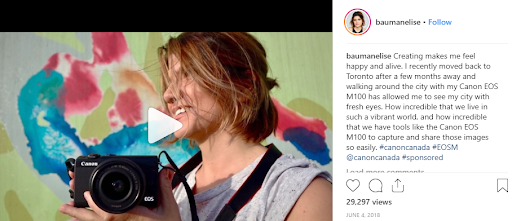
On the other hand, American Express uses a mix of mega-celebrities as well as micro-influencers to promote their brand on Instagram.
Andrea Pion is one such niche influencer along with top Instagram influencers such as Flaviana Matata, a Tanzanian fashion model, and Patrick Janelle, an entrepreneur and social media influencer actively involved in their #AmexAmbassadors campaign.
All of these influencers take advantage of American Express services during their frequent travels.
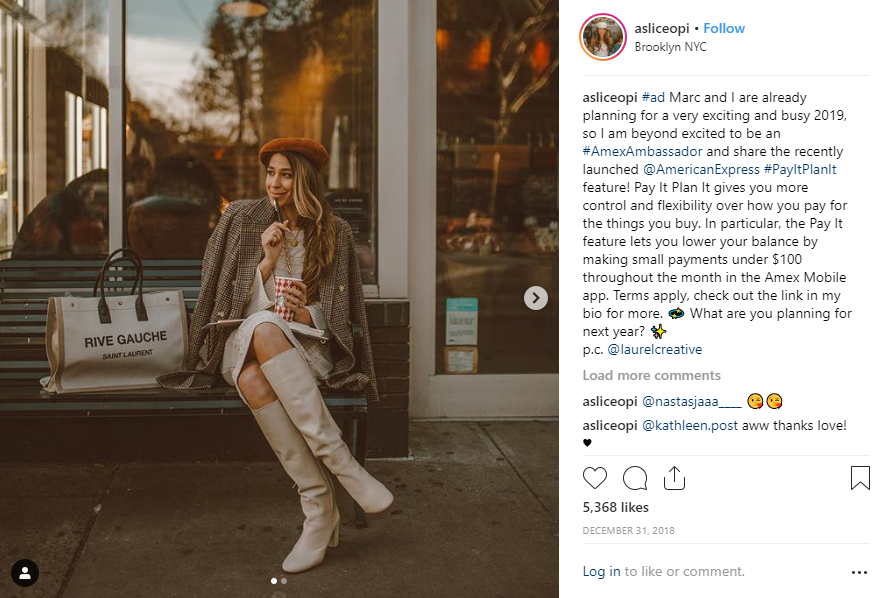
2. Look for Genuine Engagement
Engagement is one of the critical metrics of Instagram influencer marketing.
The average engagement rate for an Instagram influencer was around 4.36 percent in 2017, with influencers having less than 1,000 followers registering the highest engagement rate of 8 percent.
The engagement rate goes down as the number of followers increases. However, sometimes this metric can be misleading as popularity does not always result in conversions. You must first determine how authentic the engagement is.
Analyze the Comments
In 2017, Mediakix created two fake Instagram influencer profiles namely @wanderingggirl and @calibeachgirl310 to make people aware of the fake engagement problem.
Both accounts remained active from March to July, generating more than 80,000 followers between them and securing four paid brand endorsement deals. Chances are you may also encounter fake influencers.
One of the easiest ways to determine if the influencer is fake or genuine is to analyze comments on their posts. Usually, vague comments such as “nice pic” or “cool dress” or “looking good,” and comments with emojis often mean fake engagement.
On the other hand, relevant and conversational comments are a sign of real engagement, which brings us to the next point.
Search for Word-of-Mouth Reactions
Real followers ask questions, make personal statements, and also tag their friends in comments. These are word-of-mouth reactions by genuine followers.
Check out the following post from Lisa Linh, an Instagram influencer. All her posts receive real responses, like this one, from her genuine followers, not bots. Only this type of engagement can result in new leads and sales.
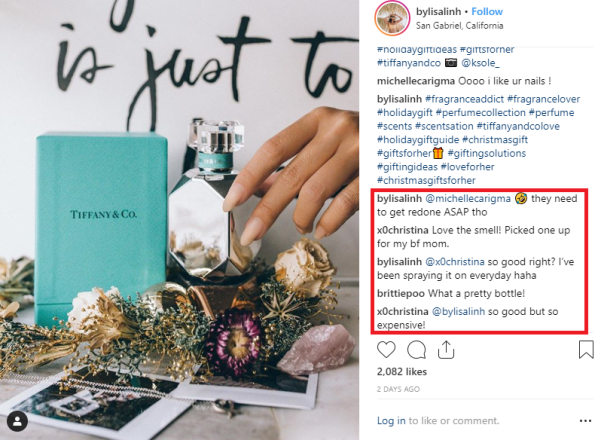
3. Explore Hashtags Related to Your Brand
It is better to rope in Instagrammers who are already talking about your brand or products. They could be the next influencers to promote your brand.
Some hashtag research can prove helpful in this regard.
Avoid High-Density Hashtags
Hashtags are just like keywords for SEO. You will come across several high-density keywords. These are the most used hashtags on Instagram.
Though relevant, using these keywords to look up influencers will be a waste of time.
For example, if you start your search with #organic, you will have to go through more than 33,00,000 posts.
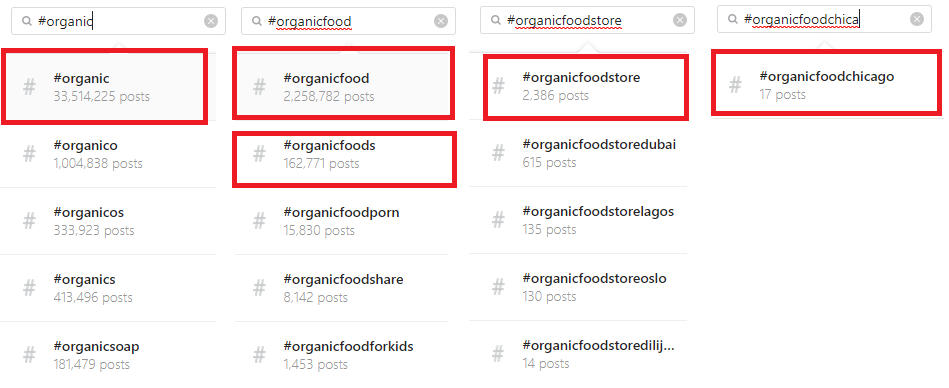
But, as you dig deeper into long-tail (or low density) hashtags, the number of posts also goes down. In this case, #organicfoods has 162,771 posts, #organicfoodstore has 2,386 posts, while #organicfoodchicago has only 17 posts.
Both #organicfoods and #organicfoodstore will provide you will more accurate search results. #organicfoodchicago has too few posts to be considered for influencer search.
Use Keywords That Describe Your Brand or Target Audience
You can also start your search with keywords that describe your brand or target audience. Focus on tags with a substantial number of posts to find influencers.
If you’re selling running or jogging accessories, start your search with something like #running, and Instagram will suggest the most trending and relevant hashtags.
Here you can use hashtags such as #runningmama, #runninggirl, and #runningcoach to look for influencers catering to a specific niche.
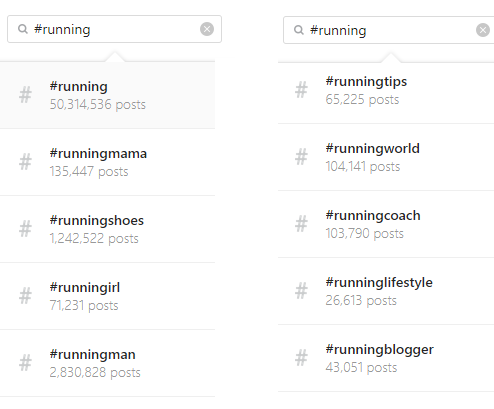
Use the Hashtags #sponsored or #ad
Instagram also requires influencers to use #sponsored or #ad hashtags to distinguish promotional content. You can follow these hashtags to find out the potential influencers in your niche.
You can mine your followers or your competitor’s followers to see who is using #sponsored or #ad hashtags. If they are using it, they already know what influencer marketing is. You can ask them to promote your product.
4. Use an Influencer Platform
All these methods, though useful, are manual and time-consuming. Fortunately, you can use an influencer marketing platform to find the right influencers with just a few clicks.
Some of the popular ones include HYPR, Tap Influence, Upfluence, Famebit, NeoReach, Revfluence, and Influencer.
Find the Right Influencers
You can search for the most suitable influencers in your niche using different sets of parameters such as the number of followers, type of followers (demographics), and work experience.
Complete Campaign Management
You can also manage one or more of your influencer marketing campaigns using these platforms. You can control campaign features such as advertisement text, graphics, hashtags, social media mentions, giveaway details, influencer payments, and the complete campaign timeline through one platform.
Real-Time Analytics
You can calculate various campaign metrics including views, reach, engagements, ROI calculations, and URL tracking. Several platforms allow you to generate daily, weekly, and monthly reports that you can share with your marketing team.
Perhaps, the only downside is that all these platforms usually charge you a recurring monthly or annual fee. If you can set aside a budget for this, you will save a lot of time and resources.
Keep the following in mind when choosing a platform:
- Choose a platform with a substantial number of influencers from your niche. But, make sure the quality of influencers is also good.
- Find out what content creation, distribution, and tracking tools are available on a platform. You should be able to control every aspect of your campaign through the platform.
- The platform should also provide a good selection of real-time analytics and reporting tools.
- You should also get built-in payment and transaction facilities to pay your influencers.
- Don’t forget to check what others are saying about the platform. Check user reviews along with how long the platform has been around before registering.
Here are a few examples of influencer marketing platforms to get you started:
- TapInfluence: It is a cloud-based influencer marketing platform. According to TapInfluence, their platform can result in an 11x increase in ROI of your influencer marketing campaigns. It also comes with an ROI calculator that lets you know whether your sales goals are worth investing in a marketing campaign.
- Famebit: It initially focused on YouTubers, but now Famebit supports almost all social networking sites. You can find social media influencers starting with 5000 followers belonging to varied niches.
- HYPR: HYPR claims that over 30 percent of the world’s largest brands, agencies, and influencer marketing platforms trust their data. This feature-rich platform comes with several tools based on sophisticated algorithms to help analyze the registered influencers.
Parting Words
Influencer marketing is catching up, particularly on Instagram.
However, only the right influencer can help you succeed. So, you need to focus your efforts on finding the perfect match for your business.
Hopefully, these four tips will help you find the best fit for your brand.
Have you used Instagram influencer marketing before? Tell us more about it in the comments box below.
Image Credits
Featured Image: Created by author, February 2019
All screenshots taken by author, February 2019
Subscribe to SEJ
Get our daily newsletter from SEJ’s Founder Loren Baker about the latest news in the industry!
